Egypt's Tombs in the Valley of the Kings
The Best Tombs of the Valley of the Kings in Egypt
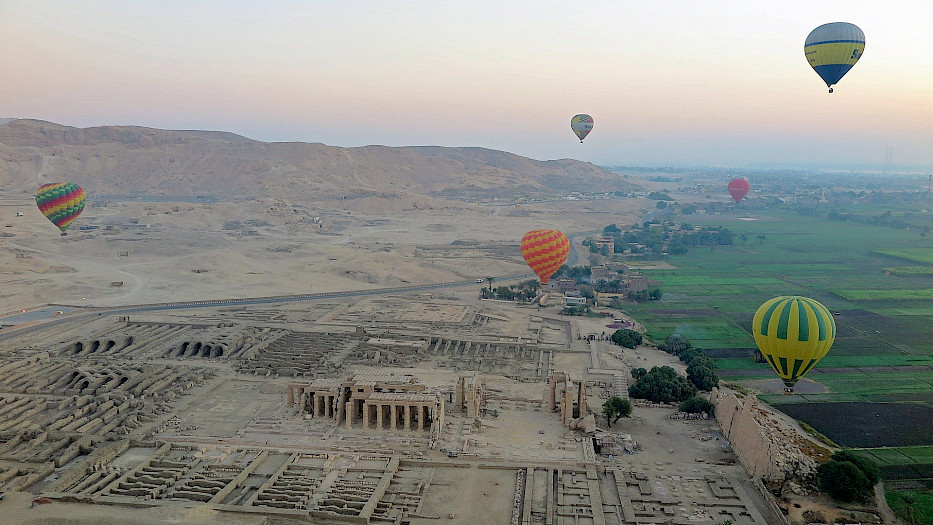
”It would be hopeless to attempt to put into writing those impressions which go to make the entering a great Egyptian sepulcher so thrilling: one cannot describe the silence, the echoing steps, the dark shadows, the hot air, nor tell of the sense of vast Time and the penetrating of it which stirs one so deeply.” - Arthur Weigall
For centuries, Egypt’s Valley of the Kings has attracted a steady stream of adventurers from visitors and scholars to artists and poets, all drawn by the curiosity and romance that this royal Theban Cemetery evokes. In the early 19th century the exploration of the Tombs of the ancient Egyptian Pharaohs offered both enormous rewards for some and enormous disappointments for others. As Lord Carnarvon, the man that bankrolled Howard Carter who discovered the tomb of King Tut once said, “You either find grand things or nothing at all.” Exploration, excavation, and conservation continue even today with new discoveries still being made.
The Valley of the Kings is located on the west bank of the Nile River across from modern-day Luxor, a city once known as Thebes in the ancient world. Today, in this barren wadi that is the location of the Valley of the Kings, visitors will find some of the most extraordinary tombs ever discovered. Many tombs represent some of the most exciting discoveries ever made by Egyptologists. The discovery of the tomb of Tutankhamun for example, in 1922, amazed the public world-wide about the tremendous wealth and power of the ancient Egyptian Pharaohs. This tomb gave the modern world, tourists and scholars alike, the insight into what the Valley of the Kings had once been…the largest display of wealth accumulated through five centuries in the ancient world. It still amazes today.
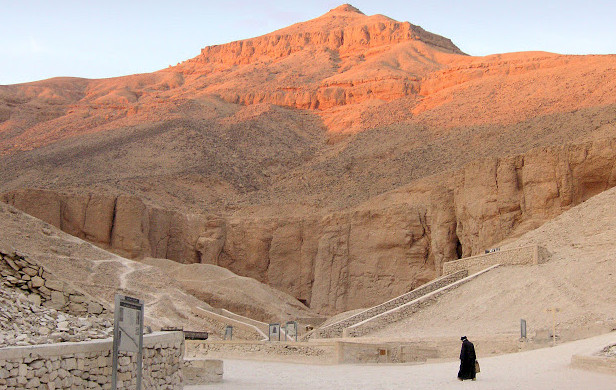
Decoding Tombs
The hills on the west bank of the Nile River are dominated by the peak known as Al-Qurn, a pyramid shaped mountain that is reminiscent of the pyramids of Giza. There are 64 tombs in the Valley of the Kings that have been discovered so far. These tombs were constructed for a period of 500 years from the 16th to the 11th century BC. They range from large to small, from roughly hewn to opulently painted, from mere pits to tombs with more than 120 chambers.
Almost all the tombs have been robbed in antiquity but they still give visitors an idea of the grandeur of the Pharaohs. The tombs are officially given a KV number, standing for King’s Valley. The tomb of King Tutankhamun, for example, is KV62. One of the best ways to approach the Valley of the Kings is to try to see tombs representing different times and ways of decorating and construction.
Not all tombs are open to the public. Out of the 64 tombs, only 11 are open to the public and only eight are included in a standard ticket as of 2020. A special ticket is needed to see the tomb of King Tutankhamun (KV62), Seti I (KV17), Ramses V, and Ramses VI (KV9). As of this writing, the eight tombs included in your standard ticket of which you can choose three include the tombs of Ramses VII (KV1), Ramses IV (KV2), Ramses IX (KV6), Merenptah (KV8), Ramses III (KV11), Tausert-Setnakht (KV14), Seti II (KV15) and Siptah (KV47).
Cameras including mobile phones require a separate ticket. Always keep in mind that some tombs close periodically to the public for conservation and renovation purposes.
Tomb Decoration
All the tombs in the Valley of Kings tell stories of ritual and magic, of high priests, of the Pharaoh with the Gods to ensure a safe journey to the afterlife. The tombs are decorated with religious texts and images. The early tombs are decorated with scenes from Amduat (That which is in the Underworld) that describes the journey of the sun god through the twelve hours of the night. Later tombs in the 19th dynasty were decorated with the Book of the Gates which show the sun god passing through the twelve gates that divide the night and ensures the tombs owner safe passage. In the Late 19th Dynasty, the Book of the Caverns, which divided the underworld into large areas where the gods and the deceased waited for the sun to pass through to bring them back to life.
Choosing What Three Standard Tombs to Visit
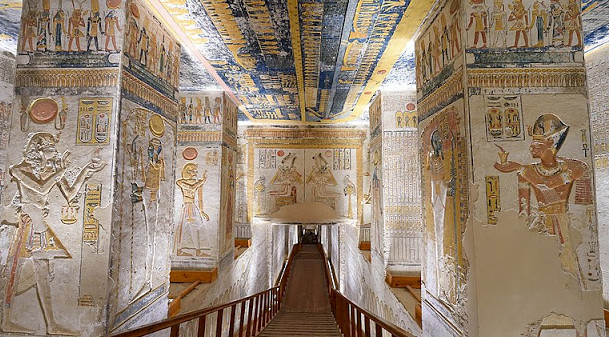
Tomb of Ramses VII (KVI) | This is a late period Twentieth Dynasty tomb that consists of the entrance, a passageway, the burial chamber with a sarcophagus, and a final smaller room. The passageway is decorated with illustrations from the Book of the Gates and the Book of the Caverns. The burial chamber is decorated with the Book of the Earth and has a double image of the sky goddess Nut on the ceiling.
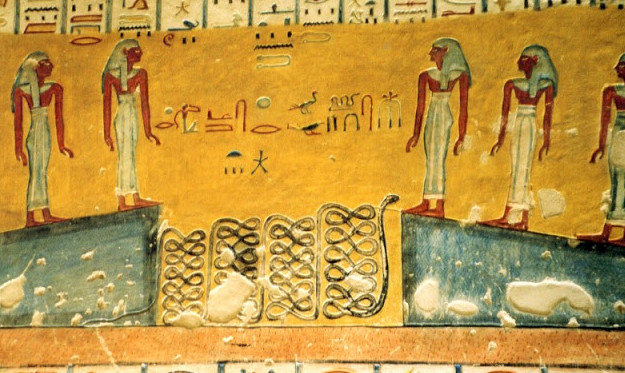
Ramses IV (KV2) | This late Twentieth Dynasty tomb has been open since antiquity and has a lot of graffiti. It is laid out along a straight axis and is thought to be simple in design. There are three corridors that slope gently downward that lead to a burial chamber. Just past the burial chamber is another narrow corridor with three side chambers. The tomb is mostly intact and is decorated with scenes from the Litany of Ra, Book of the Caverns, the Book of the Dead, and the Amduat. The large sarcophagus is broken; probably in antiquity. Look for 50 or so examples of Coptic graffiti on the right wall by the entrance.
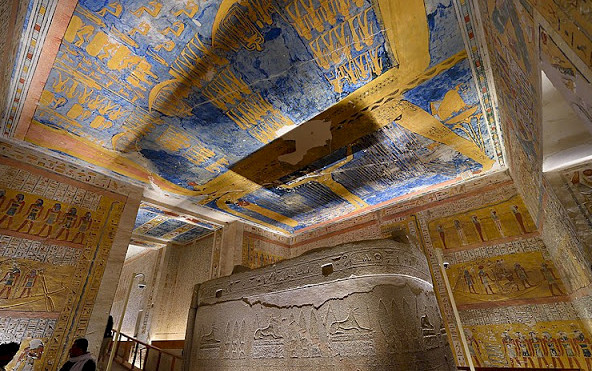
Ramses IX (KV6) | This is a large tomb built in the Twentieth Dynasty and runs 105 meters into the hillside. It has a shallow descending ramp that leads to two corridors that have four side chambers each, but none are finished. At the end of the corridor, there are three chambers, one is decorated with the Opening of the Mouth ritual, and the second chamber with four large columns is not decorated. The burial chamber has a vaulted ceiling and is decorated with images of the sky goddess Nut. The far wall has an image of Ramses on a boat surrounded by gods. The yellows, dark blues, and blacks used to decorate this chamber make it unusual in the KV. It was used as a Coptic Church for a short time, so look for the Coptic graffiti on the walls.
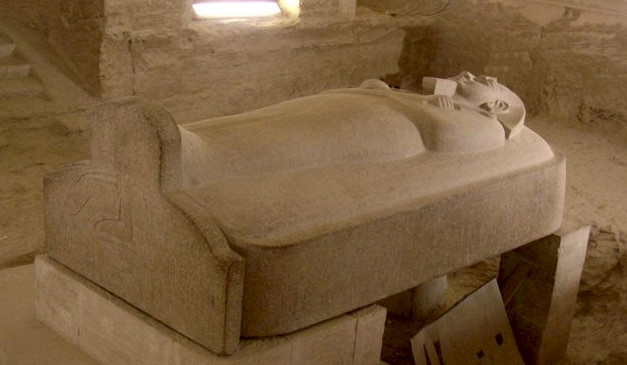
Merenptah (KV8) | This is a Nineteenth Dynasty tomb and is distinguished by its wide long corridor. Images of the sun god flanked by Isis and Nephthys decorate the entryway. The first passageway is decorated with the King before the sun god and the second passageway is decorated with scenes from the Litany of Re. There are several side chambers, a well shaft, a pillared hall decorated with Osiris Shrines, and scenes from the Book of the Gates. The lower passages are decorated with the opening of the mouth ritual. The burial chamber has a vaulted astronomical ceiling and the walls are decorated with scenes from the Book of the Gates, and the Book of the Caverns. A large creamy white calcite lid of the sarcophagus in the shape of a cartouche remains and is embellished with the reclining mummified figure of the king.
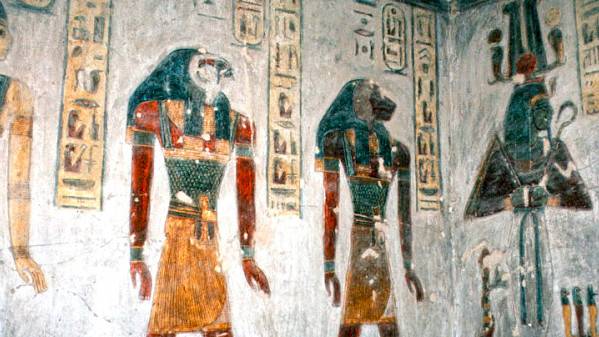
Ramses III (KV11) | This Twentieth Dynasty tomb has been open since antiquity. It is one of the largest that is open in the Valley and is a stunning 617 feet long. It is beautifully decorated. Most tombs run on a straight axis but this tomb takes a sudden turn because it ran into another burial site. Ramses III is considered to be the last great king of the New Kingdom. He also built a beautiful Mortuary Temple at Medinet Habu. Ramses III had a large harem that ultimately led to his death in an elaborate assassination plot known as the “harem conspiracy.” A minor wife wanted to put her son on the throne and had the monarch killed. Ramses III’s mummy reveals that his throat was slit so the assassination attempt succeeded. The effort to put the prince on the throne did not succeed as records show that the minor wife and son were put on trial. How the law dealt with the queen is unknown but the prince was forced to commit suicide.
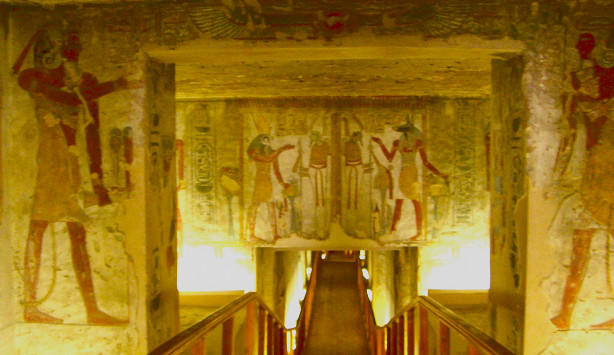
Tausert-Setnakht (KV14) | This Nineteenth Dynasty and Twentieth Dynasty tomb is one of the largest and most unusual tombs in the KV. It was initially started as a tomb for Queen Tausert who ascended the throne as Pharaoh, the last of the 19th dynasty. The tomb was eventually taken over in the 20th dynasty and enlarged by King Setnakht. It has two burial chambers and the extension built by King Setnakht makes it one of the largest tombs in the Valley. Images at the beginning of the tomb are those of the Queen, with several being redrawn in the image of the king. Much of the decorative plan stayed the same with the name of the queen plastered over by the king. The first burial chamber has eight pillars, an astronomical ceiling, and scenes from the Book of the Caverns. The corridors leading to the second burial chamber are decorated with scenes from the Amduat. The second burial chamber has eight pillars an astronomical ceiling, and scenes from the Book of Gates.
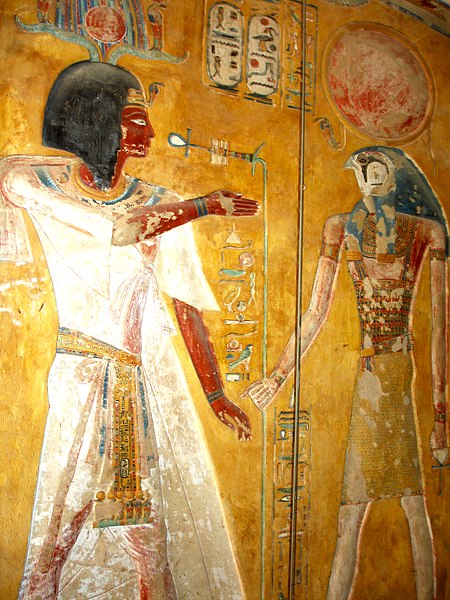
Siptah (KV47) | King Siptah was the son of Seti II and not very much is known about him. He inherited the throne after his brother died, but it was his stepmother Tausret who ruled the land during Siptah’s short life as he seems to have died during the sixth year of his reign. This Nineteenth Dynasty tomb was discovered in 1908 and in 1994 restoration began so it could be open to visitors. The entrance is decorated with images of the sun god and Maat and the first two passages are decorated with scenes from the Litany of Re and the Amduat. After the second passageway, this tomb is undecorated because of successive floods. The paintings on the corridors are fairly well preserved. The sarcophagus is found in the burial chamber and is decorated with recumbent jackals. The burial chamber is unusual because it has no storerooms. Another quirk that makes this tomb unusual is that there are two corridors rather than a corridor and stairway. One constructed after the pillared hall and, uniquely a side passageway cut after the antechamber that goes nowhere.
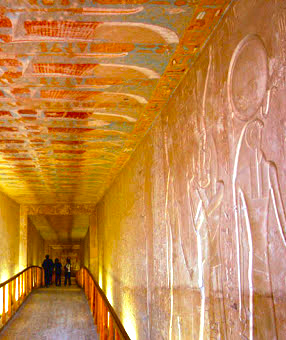
Seti II (KV15) | This Nineteenth dynasty tomb was built in the same basic pattern as that of his father, Merenpthah, KV8. The doorway to this tomb is cut in the face of a cliff rather than having steps cut beneath it. KV 15 has two descending corridors decorated with the Litany of Re followed by a corridor decorated with the Amduat. These corridors lead to a pillared hall with scenes from the Book of the Gates. Beyond this is a passageway that was adopted into a burial chamber. The chamber is decorated with gods and goddesses and has Nut on the ceiling. The work in the pillared hall and in the burial chamber is rather crudely painted indicating that perhaps Seti died before the work was completed.
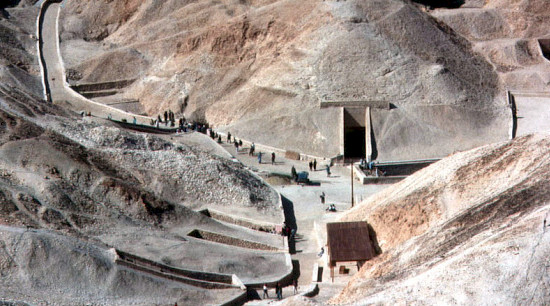
The Valley of the Kings is the royal burial ground for pharaohs from the 18th, 19th and 20th dynasties known as the New Kingdom. Whatever three tombs that you choose to explore using your standard ticket choice leave yourself enough time to savor what you are seeing. It is always best to see the tombs that are included on your ticket first and end with the tombs that require an extra ticket, which are generally less crowded. As for favorites, many visitors like the tomb of Ramses III because it is one of the largest, the tomb of Tausert-Setnakht because it is so colorful, large, and unusual, and the tomb of Ramses IV because of its elaborate decorations and colorful images that line the walls and ceilings. If you are in the Valley of the Kings when the Tomb of Tuthmose III is open, don’t miss this 18th dynasty tomb that is one of the most spectacular in the Valley. The burial chamber is designed in the shape of a large cartouche. The ceiling is decorated with yellow stars on a bright blue background and the walls are decorated with scenes from the Amduat.
How to Visit?
The Egypt Explorer tour offered by Tours of Distinction features four nights in Cairo, one night in Aswan and a three night luxury Nile River cruise with included shore excursions.
The tour also includes:
- Pyramids of Giza and the Sphinx
- Abu Simbel
- International & Internal Flights
- Valley of the Kings
A total of seventeen meals are included: eight breakfasts, five lunches, and four dinners in addition to a Tours of Distinction Professional Tour Director and knowledgable local guides.
